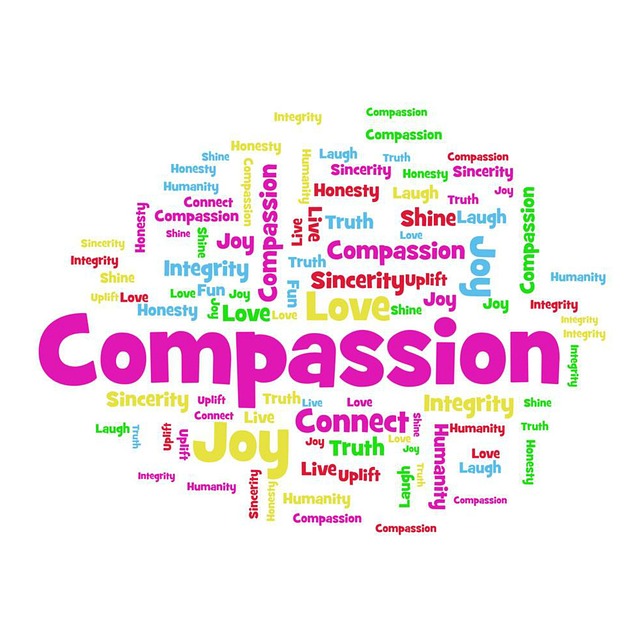Allyson Pimentel offers a meditation podcast on the topic of “Mindfulness as Support”. In the guided meditation, presented as a teacher at the Mindful Awareness Research Center (MARC), Allyson reminds us of the power of mindfulness to provide a refuge in challenging times, whether the source of difficulty is at home or at work. She suggests that mindfulness, being in the present moment and accepting what is, enables us to navigate troubled waters by helping us to access our inner peace and equanimity and providing the opportunity to experience a wider perspective than a total focus on the present troubles or pain.
Mindfulness as nourishment for carers
Carers have a particularly challenging time as they not only have to deal with their own difficulties but also the suffering and difficulties of others such as Alzheimer’s Disease experienced by a loved on. There is not only the challenge of seeing someone else suffer but also the need to manage the emotional contamination of another’s pain and personal distress.
Allyson reminds us that mindfulness enables us to broaden our perspective beyond the immediate, perceived suffering to other things that are good in our lives and that of others. We can pay attention to the broader environment of sounds and laughter, open our minds to all that we have received in life and that another person has received. This “wider aperture” brings with it appreciation that beyond immediate difficulties and suffering is relief. Allyson likens it to going from the centre of a dark wood to coming to the edge where light streams in and lush green plains open before us.
Extending beyond ourselves
In the guided meditation, Allyson encourages us to think about others beyond our immediate sphere who might be experiencing suffering and personal difficulties, whether that involves pandemic-induced illness, addiction, loss of job or home, disconnection from family and friends, mental illness, or financial difficulties. She suggests that we try to encompass others by focusing on them and their needs and wishing them peace, tranquility, and ease. We can also envisage them offering us empathetic support in return.
Mindfulness as support for business owners
The Smiling Mind organisation reminds us that small business owners can gain support from mindfulness particularly in these difficult times of the pandemic and associated economic difficulties. Small business owners have to deal with the daily challenges of managing their cash flow, engaging and retaining staff, dealing with business uncertainties and political changes, managing multiple demands on their time and skills and establishing a work-life balance. On top of this is the ever-present challenge of maintaining quality relationships at home with partners and children while their minds are full of business-related information and endless to-do lists.
Mindfulness enables small business owners to manage stress more effectively, achieve increased self-awareness and awareness of others, build their powers of concentration and cultivate their creativity. It provides a refuge from daily turbulent waves and a place to recuperate and restore perspective. Mindfulness also helps small business owners to develop resilience, to improve their deep listening skills and their relationships, and to realise much-needed, regenerative sleep.
Smiling Mind, in association with MYOB, offers a free mindfulness app with a special Small Business Program within the “At Work” section of the app. They also have specific blog posts dedicated to how mindfulness can support business owners manage their day-to-day challenges.
Mindfulness as support for people with addictions
In a previous post I discussed how mindfulness through growing self-awareness can break down the “trigger-reward” cycle involved in addiction. I also discussed the barriers to undertake and sustain mindfulness practice to overcome addiction and offered a four-step mindfulness practice to overcome these barriers. In cases of serious addiction, mindfulness can support and reinforce therapies offered by professionals such as psychiatrists, psychotherapists, and psychologists. Just as with trauma healing, people with addictions may need the support of professionals to overcome self-destructive behaviours.
The COVID-19 pandemic while providing some people with relief from time and work pressures and the unsustainable pace of life, has also led to increased alcohol and drug addiction, especially amongst older people such as “Baby-Boomers”. In an interview podcast, Stanford psychiatrist Anna Lembke discussed the adverse impact of the pandemic on mental health as well as increased levels of addiction. She explained that pandemic-related isolation is compounding difficulties for people with mental health issues and addiction and this is in addition to other new life stressors generated by the pandemic, e.g., uncertainties concerning employment and personal health, fear of infection of themselves and loved ones, financial difficulties, the breaking down of established life patterns and thwarting of future plans.
In recognition of the pandemic-induced growth in addiction of all forms, organisations such as ARK Behavioral Health provide a range of services as well as Covid-19 Mental Health and Addiction Resources. Their insight into the adverse impact of alcohol abuse on immunity and vulnerability to COVID-19 infection is illuminating. The pandemic resources provided are comprehensive as are the levels of care that ARK Behavioral Health professionals provide.
DetoxRehabs.net is a resource centre that provides accurate, supportive information and a directory of treatment facilities and rehabilitation services and programs. They also help addicted people and their impacted loved ones to develop awareness about mental health issues through their mental health guide. The AddictionResources.Net provides similar resources and a Guide to Drug and Alcohol Detox Programs.
Reflection
Destructive emotions such as anger and resentment and related behaviours such as addiction can be injurious to the mental health and happiness of anyone as well as to that of their partners and children. As people grow in mindfulness through regular mindfulness practices, they can experience support to address destructive emotions and addictive behaviours. Mindfulness develops self-awareness and emotion regulation and cultivates conscious choice and wise action. Mindfulness can also provide support and reinforcement for situations where professional help is required to overcome addiction or heal from trauma.
___________________________________________
Image by Rebecca Tregear from Pixabay
By Ron Passfield – Copyright (Creative Commons license, Attribution–Non Commercial–No Derivatives)
Disclosure: If you purchase a product through this site, I may earn a commission which will help to pay for the site, the associated Meetup group and the resources to support the blog.









